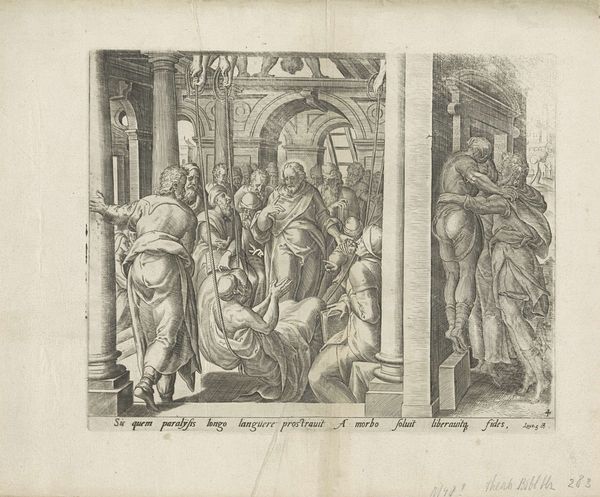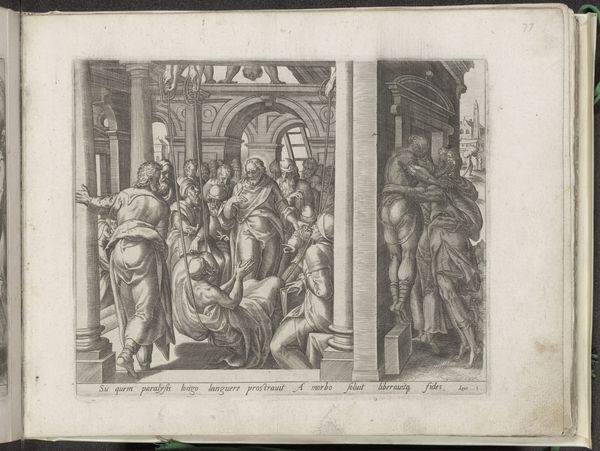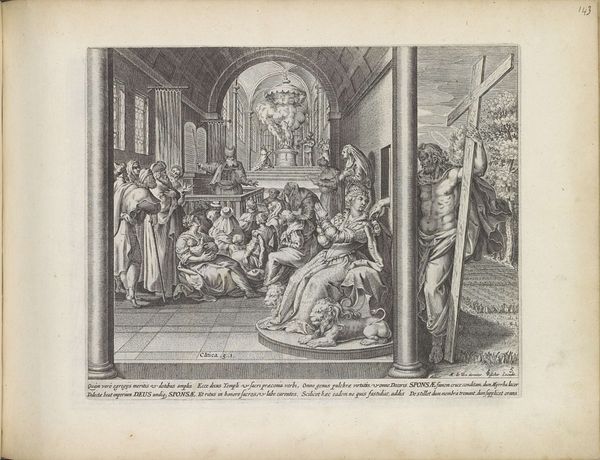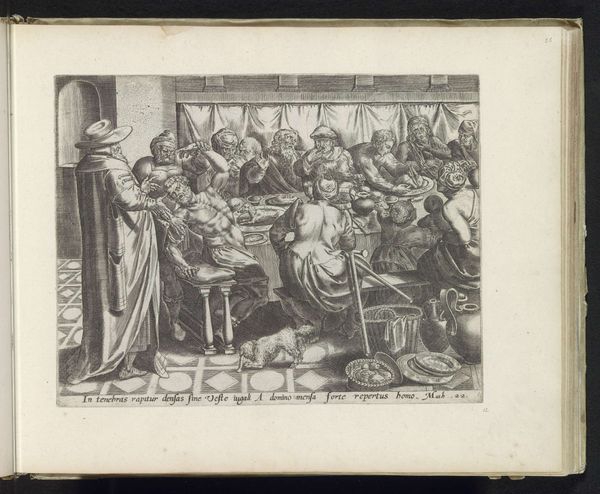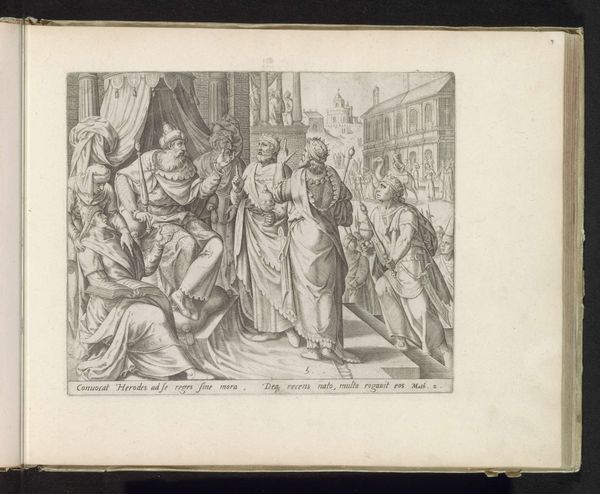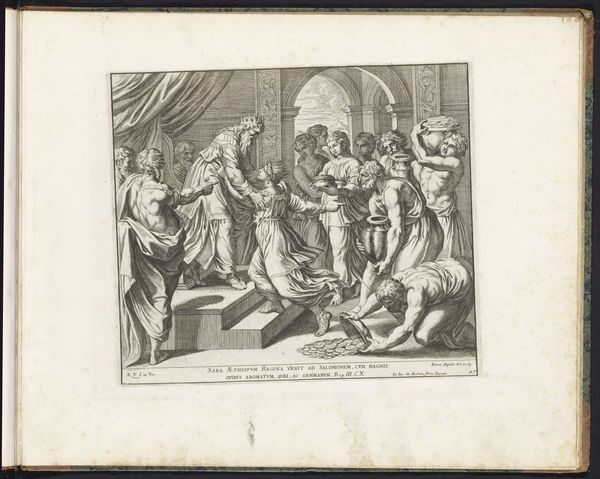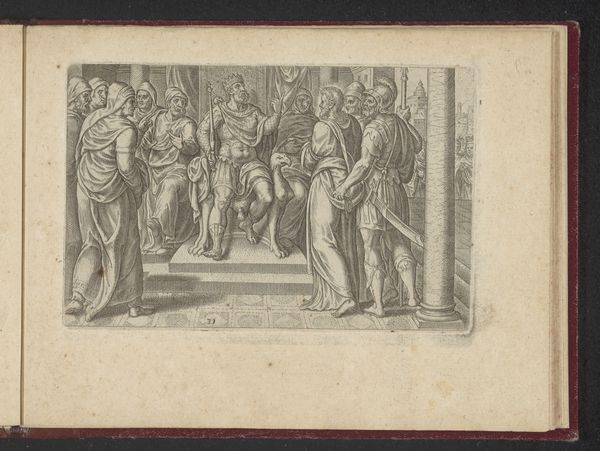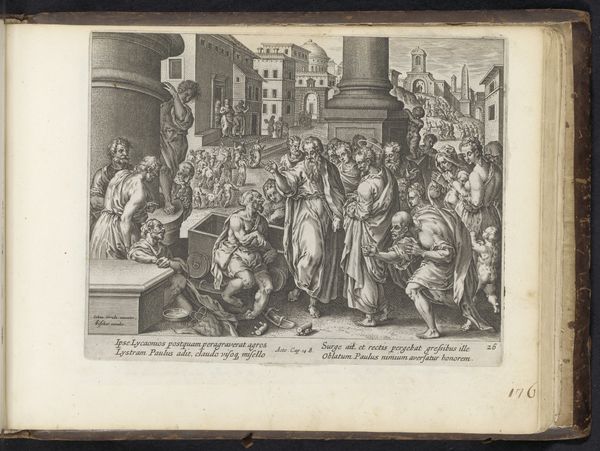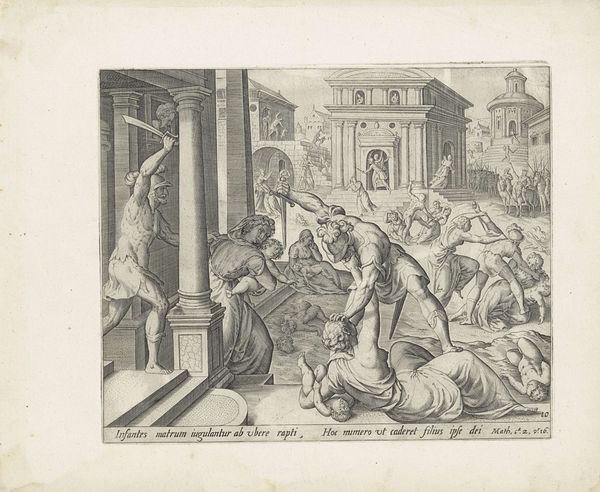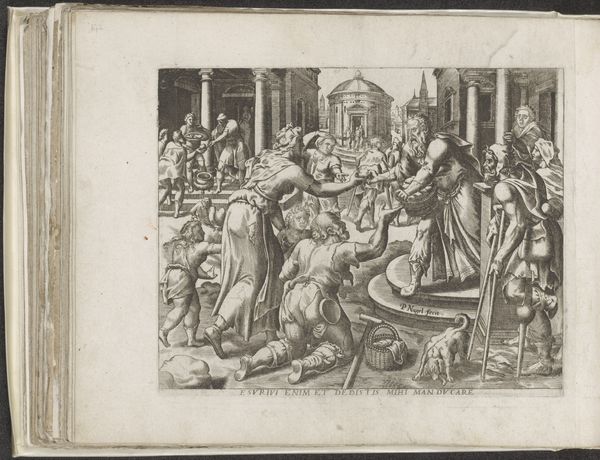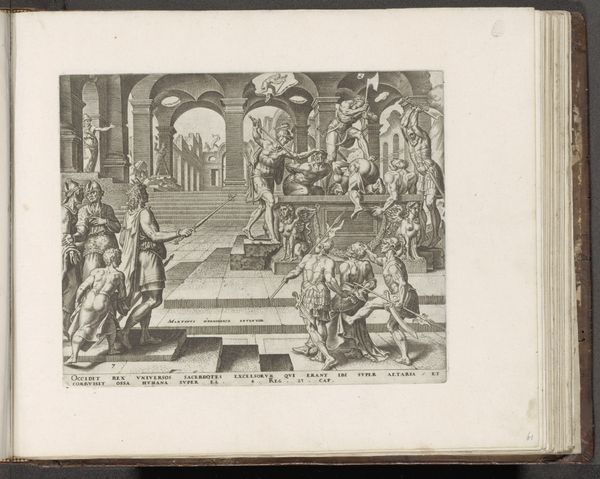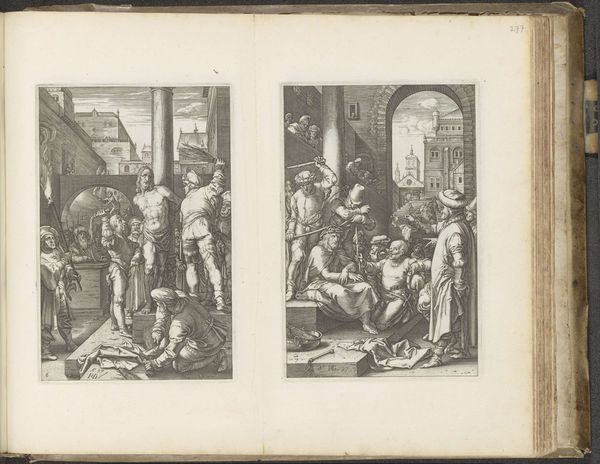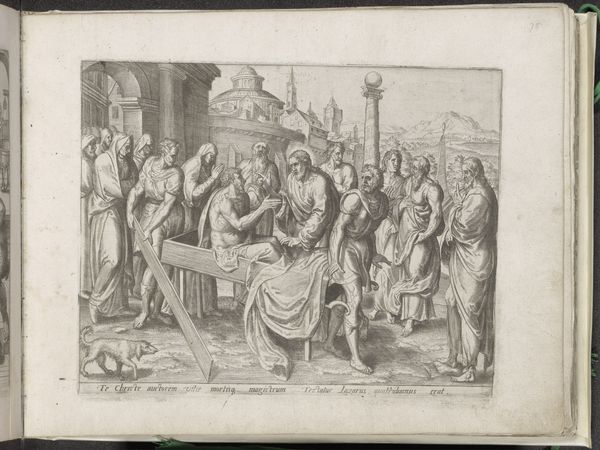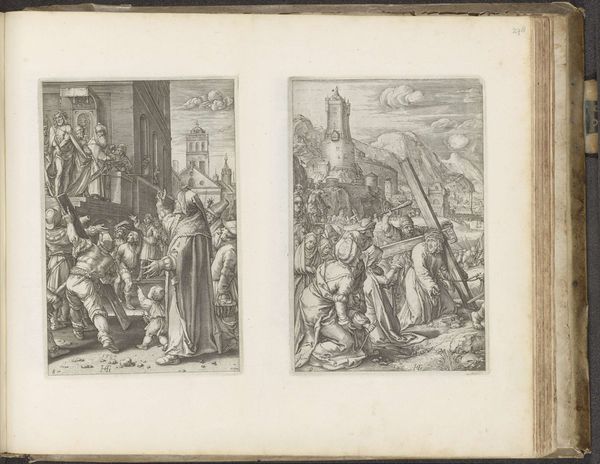
print, engraving
#
medieval
# print
#
figuration
#
line
#
genre-painting
#
history-painting
#
engraving
Dimensions: height 204 mm, width 287 mm
Copyright: Rijks Museum: Open Domain
This engraving by Wierix, dating back to the late 16th or early 17th century, depicts the consecration of a new altar. Observe the postures of the figures, particularly their kneeling and bowing. This physical expression of reverence and submission is not new; it echoes through time, harking back to ancient rituals of supplication before deities. Think of the kneeling figures in Egyptian tomb paintings or the bowing servants in Persian court scenes. The gesture transcends specific religions, appearing in various forms across cultures as a sign of deference to higher powers or authority. Consider how this act of kneeling, repeated across millennia, embeds itself in our collective memory, a physical manifestation of humility and respect that continues to resonate, engaging viewers on a deep, subconscious level. This cyclical progression of symbols reminds us that these representations constantly resurface, evolve, and take on new meanings in different historical contexts.
Comments
No comments
Be the first to comment and join the conversation on the ultimate creative platform.
